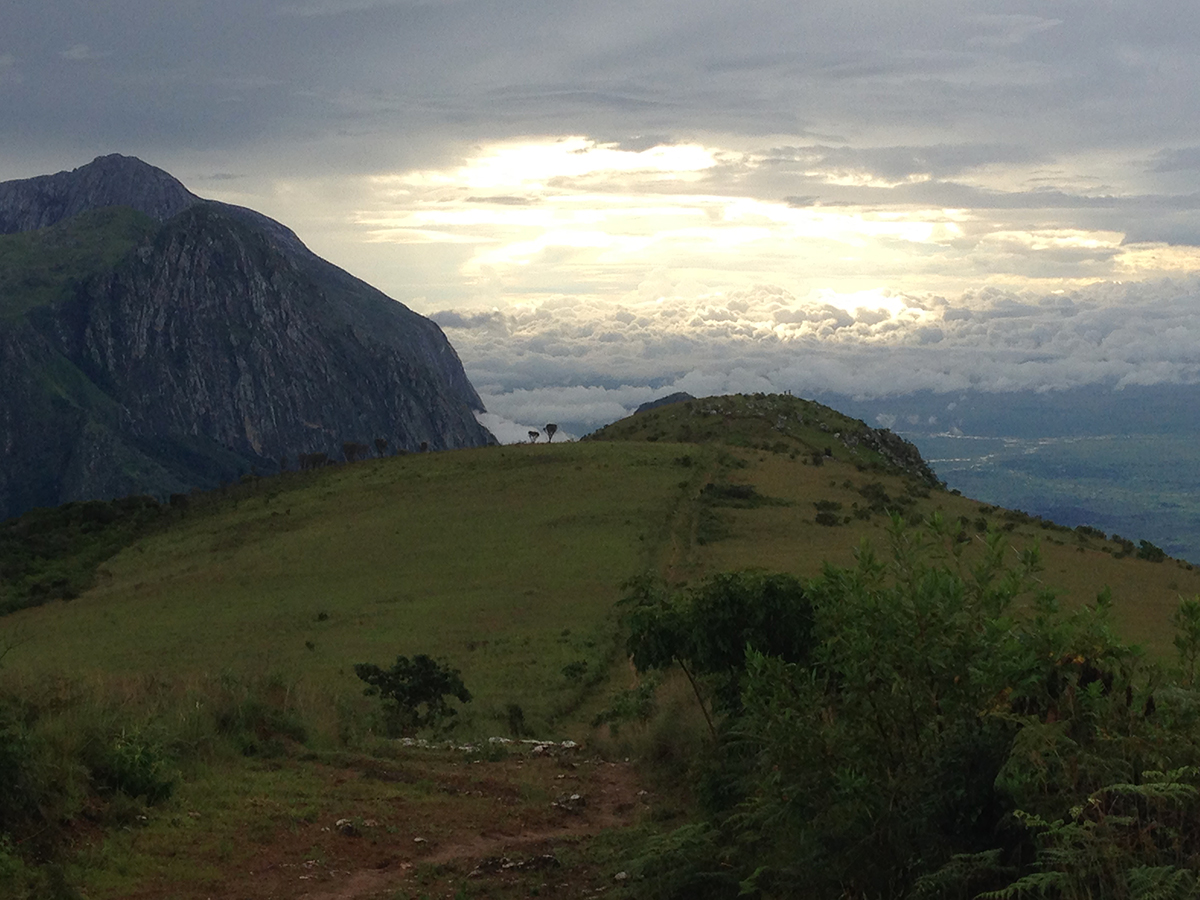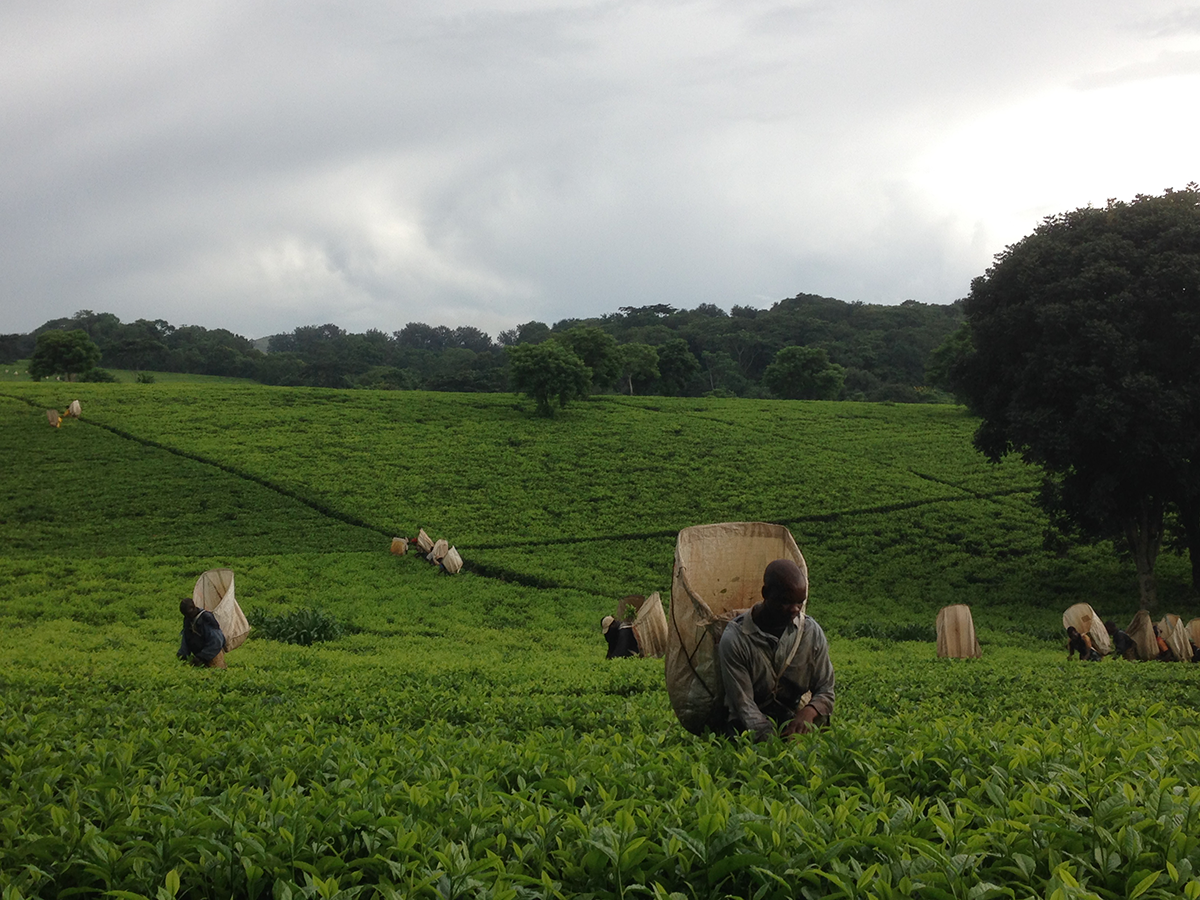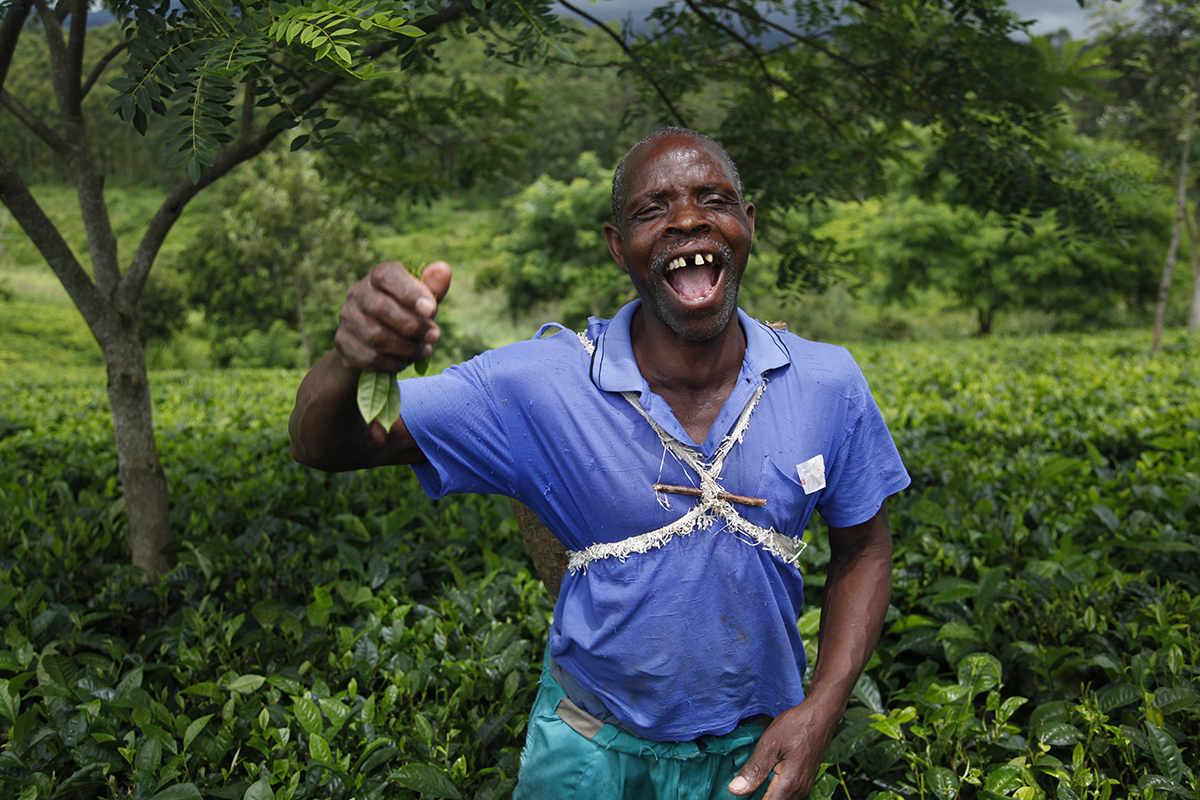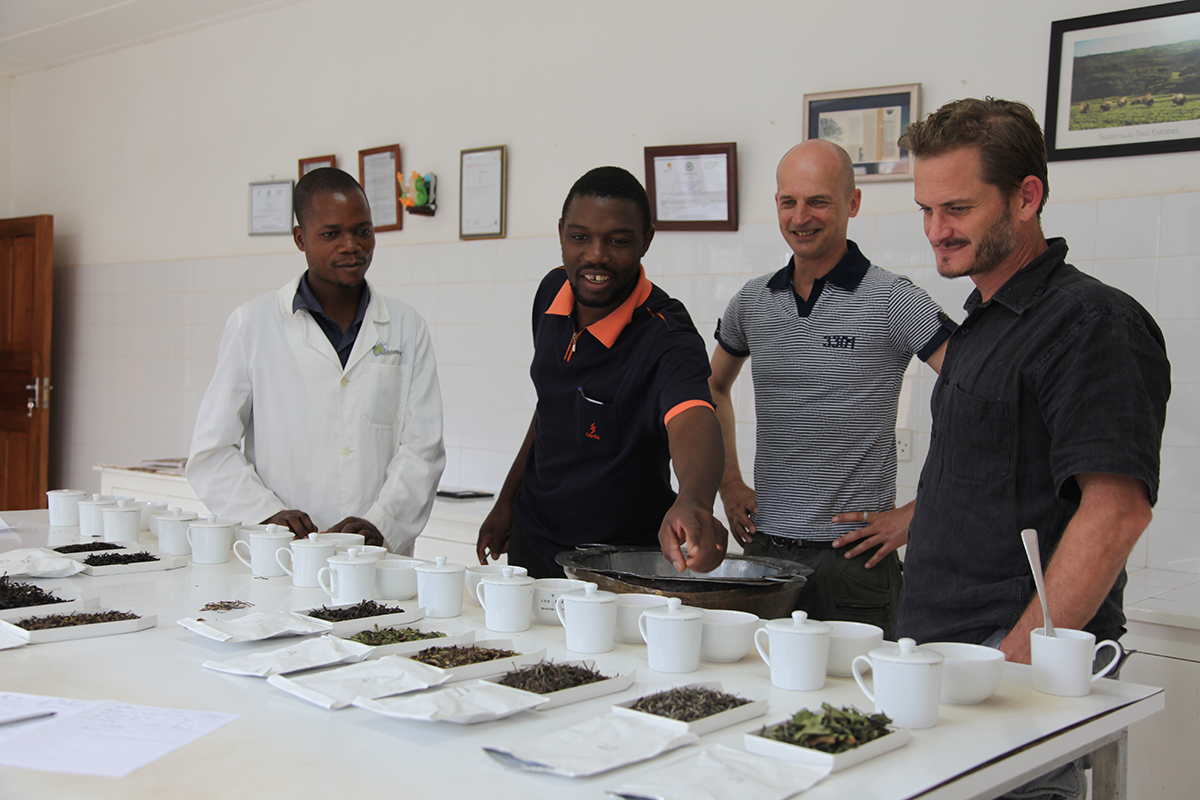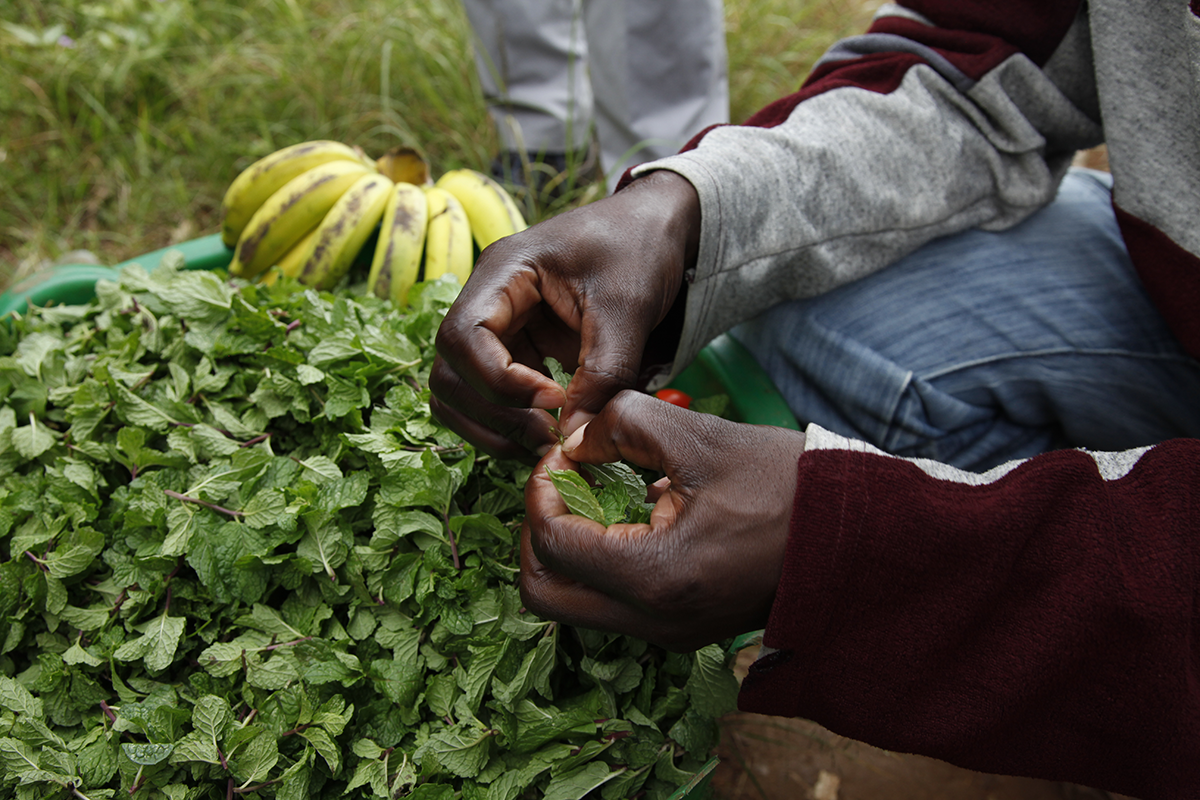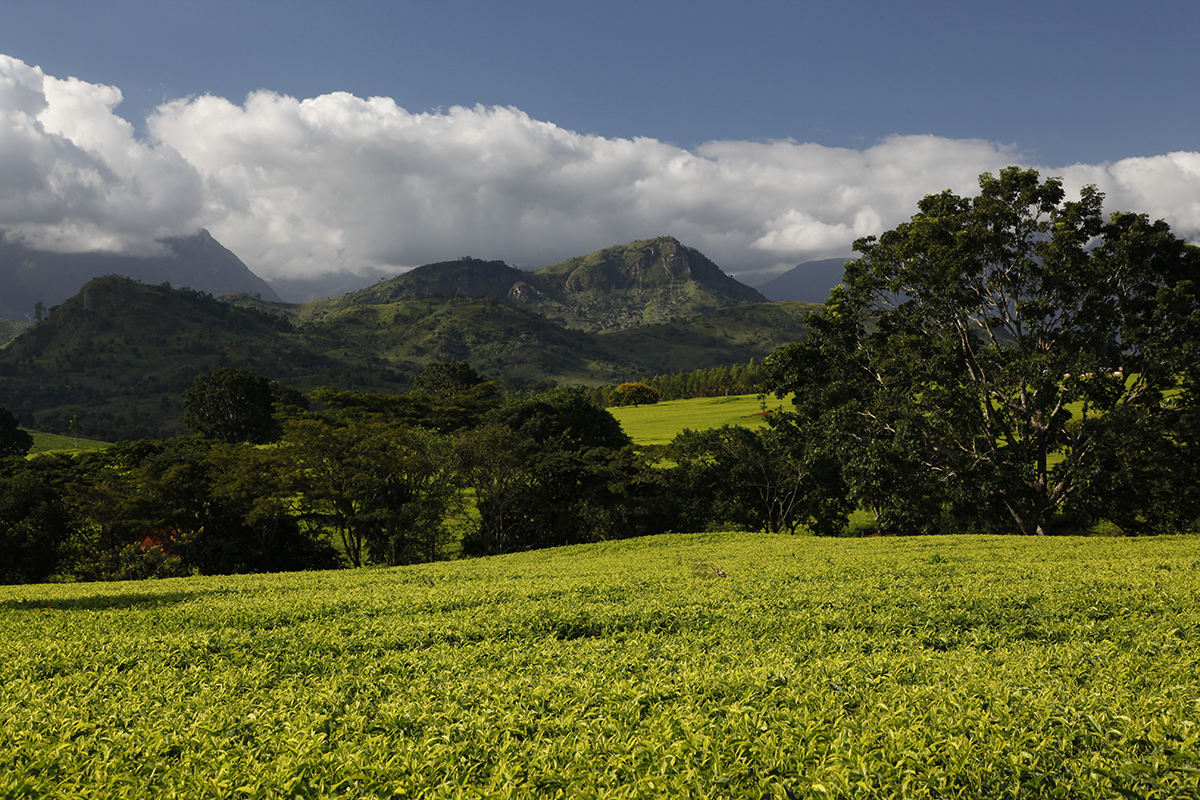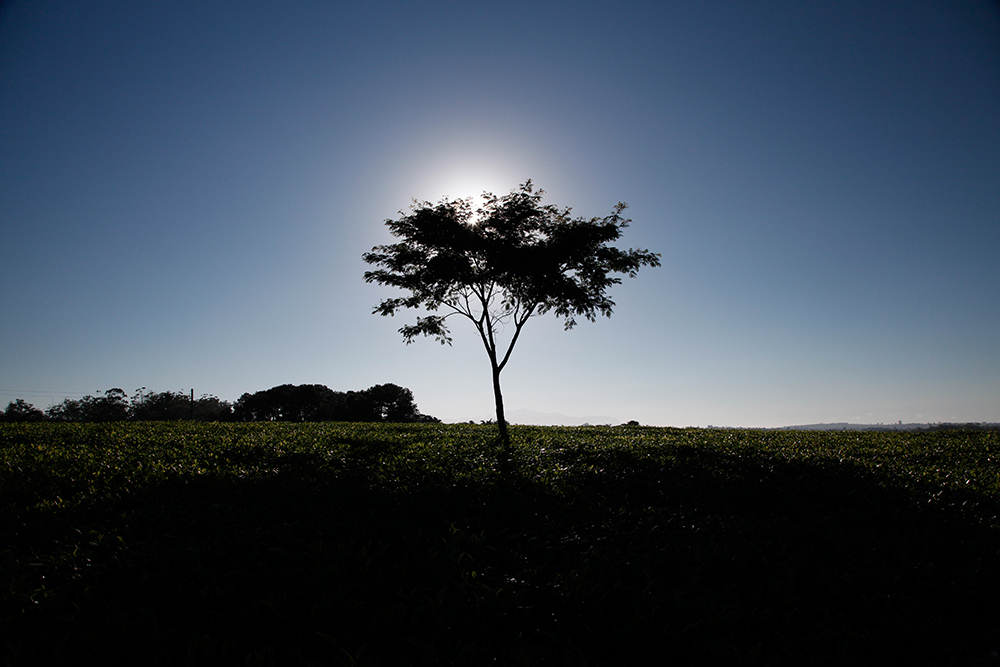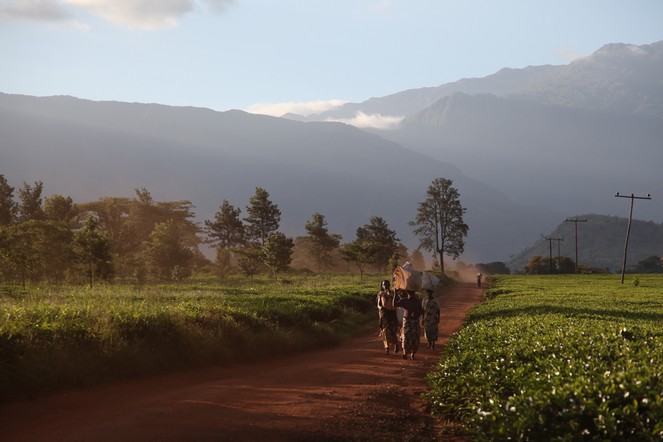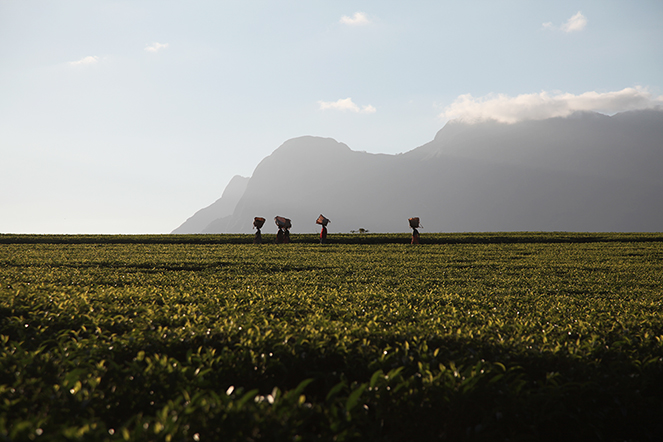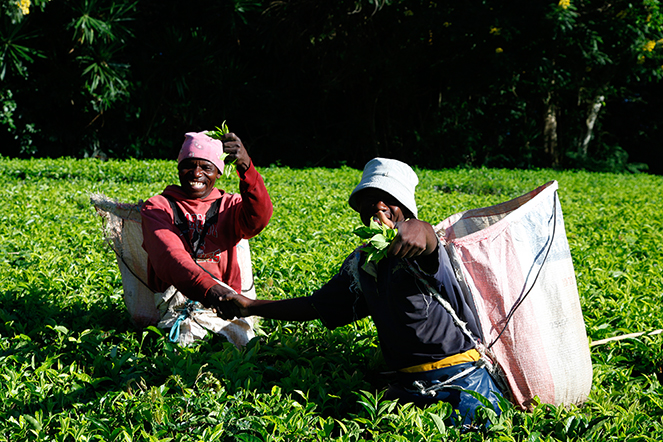We all like different kinds of holidays. I like to take a step back – or up. This might mean hiking to reach a mountain peak or walking up a hill, then sitting down and enjoying the view for hours. It can also mean reading, which is another way of “getting away” and taking a step back from everyday life. Or, I like to sit by the sea, cup of tea in hand, and look out across the water. It feels good.
Malawi
Teas worth seeking out
Africa produces enormous quantities of tea – did you know that Kenya is the world’s biggest exporter? It’s mainly low grade, destined for the production of tea bags. But if you look carefully, you can find some incredible teas in countries such as Kenya, Rwanda, Uganda and Malawi. Discovering rare teas in Africa, Asia and elsewhere is what my job is all about. It’s a job that is constantly changing from one season to the next, one year to the next. No two harvests are the same. You must taste again and again, season after season, to find the best teas of the moment.
What’s good for us mustn’t harm others or the planet
My job not only consists of hunting down rare teas that offer great flavour sensations and tasting pleasures. My motto is as follows: I want the teas that do us such good not to harm those who harvest and process them, or the planet. Such a requirement is not always easy to fulfil. With the sometimes-unacceptable working conditions, pesticide residues and excessive use of fertilisers that destroy river life, there is plenty to contend with. But I’m not a pessimist. Firstly, the higher the quality of tea, the better the practices (there are several reasons for this, such as altitude, which is a factor in the quality of tea due to the cooler nights that impede predators that might otherwise attack the plants). Secondly, a tea can only be exceptional if the greatest attention is paid to the harvest itself and to every stage in the processing, which means planters and farmers must ensure they have the best workers, who are well trained and enthusiastic. Lastly, I’ve gained enough experience now to know what to look for when I visit a plantation in terms of agricultural practices and the way the men and women are treated and how their expertise is honoured. I refuse to work with many producers. And I appreciate even more the pleasure of promoting the amazing work done by many farmers whose methods are exemplary and who know what it means to support their fellow humans every day.
Tasting teas by other farmers
My first trip to Malawi was just over three years ago. Until then, nobody had sold tea from that country in France, and I’m delighted to have found some very good teas there, which have been well received among tea enthusiasts. In a few days’ time I will be back in the far south of this magnificent country to see teas being made, including a dark tea and a smoked tea, and to taste them with Alex and his team. I will take some teas from other countries with me, which is something else I like to do in my work: encourage producers’ curiosity by getting them to try teas made by other people, not so they can copy them, but to inspire them and to connect them, through the tasting, with other farmers who have equally precious expertise.
Farmers diversify their crops
This photo may seem odd, and rightly so: these aren’t tea leaves, but mint. However, this photo perfectly illustrates an aspect of my work. Many small producers around the world grow tea, harvesting and selling the fresh leaves to a co-operative, a farmer bigger than they are, or a company, who then processes the leaves. These small producers can sometimes have strong economic power, when demand for leaves is higher than supply. But more often than not they’re dependent on the buyer. So it’s always better if a small producer makes only part of their income from tea, and grows other crops alongside it such as potatoes, ginger, fruit and so on. This protects them from fluctuations in the price of tea, and gives them greater peace of mind.
Wild and beautiful
I can never get over the beauty of Malawi. Every week, as I prepare for my blog article, I go back over the different photos I like but haven’t yet used here. And it’s always the pictures of Malawi that capture my attention for a long time. The scenery is truly stunning. I know my photo isn’t that good, you can see the tea plants aren’t completely in focus, but the extraordinary light, all those shades of green and yellow, the beautiful blue sky fringed with white clouds, the high plateaus, that wildness extending to the horizon, those soft lines and other, more angular ones… We live in such an incredible world! If we remember to open our eyes and look, of course. And if we aren’t set on destroying it.
For My
For many people who work with tea, it is not an industry like any other. There can be a lot of love in tea. A lot of generosity and humanity. There can also be a lot of passion, among aficionados and producers, as well as the people who work in our stores, and give you advice. I would like to dedicate this photo to My, who worked for many years at Palais des Thés in Brussels, and who also loved to draw. She left this world far too soon.
Time for a get-together
It is up to us to protect nature
Most countries of the world have met in Paris to try to find a solution to the ecological catastrophe threatening us. First, we need to remind ourselves that we are responsible for this catastrophe. So it is not the catastrophe itself that threatens us, it is ourselves. Humans have, despite their so-called superiority, managed to become a major danger to all living creatures, all ecosystems, and also to themselves.
It is up to us to change our ways. There is no fate. In fact it is not scientific progress that is leading to global warming, but the behaviour of a tiny minority of the people living on this Earth, who are monopolising most of our resources for their own benefit and to gain maximum profit from them. They consume at a frenzied pace, with complete disregard for our natural surroundings.
We must reconcile ourselves with our environment. We need to understand that we are just a part of it, and that to live in harmony with our environment we must accept that we are simply its inhabitants. We must understand that a river, a mountain, a forest, a swamp, an ocean or a high plateau is an ecosystem in itself and that it too has its own existence. An existence that demands our attention.
We will start to do better, and so will the planet, which gives us its resources and its beauty, when we have understood that Earth is not here to serve us humans. That we do not own it. That we have no rights to it, except to protect it, with all its richness and diversity. And that we have better things to do with our lives than to measure our success through what we consume.

